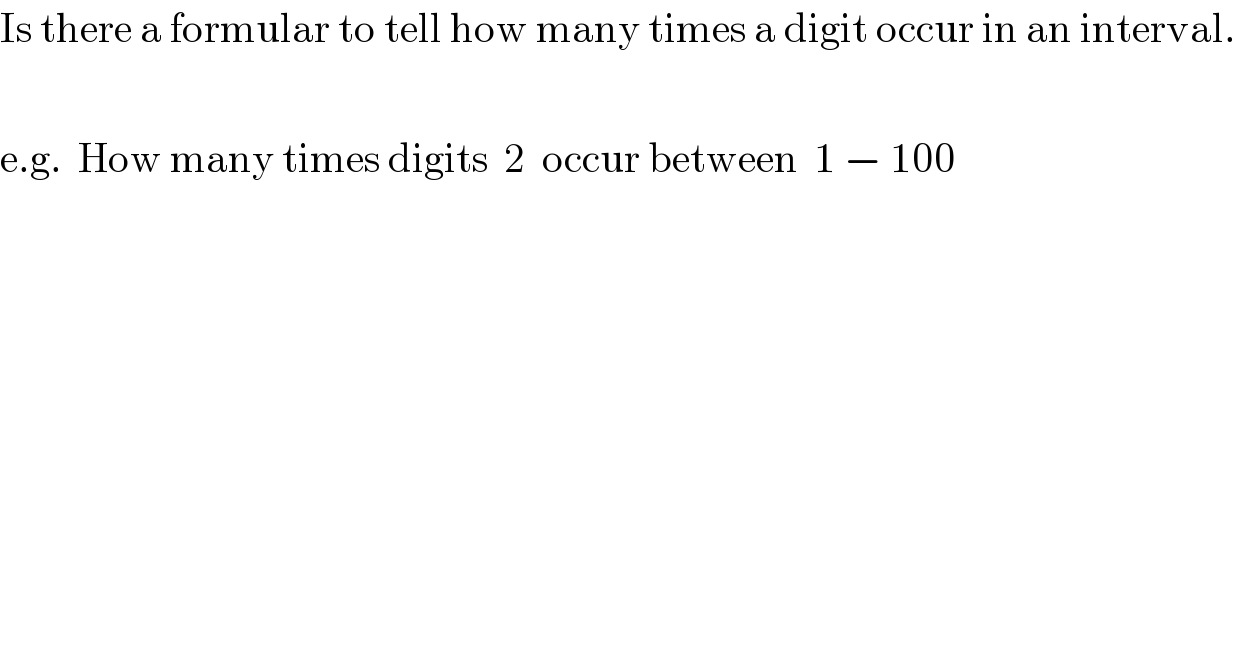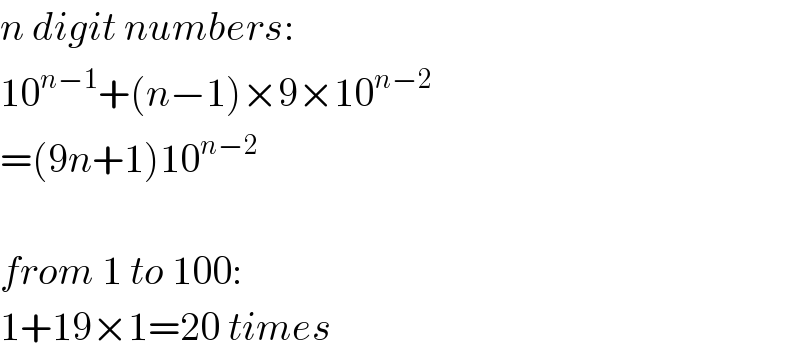
Question and Answers Forum
Question Number 116091 by I want to learn more last updated on 30/Sep/20

Answered by 1549442205PVT last updated on 01/Oct/20

Commented by I want to learn more last updated on 01/Oct/20

Commented by 1549442205PVT last updated on 01/Oct/20

Commented by mr W last updated on 02/Oct/20

Answered by mr W last updated on 01/Oct/20

Commented by I want to learn more last updated on 06/Oct/20

Commented by I want to learn more last updated on 06/Oct/20

Commented by I want to learn more last updated on 06/Oct/20

Commented by mr W last updated on 06/Oct/20
![let′s look at numbers with m digits xxxx...x the digit 2 (or any other non−zero digit) can be at first position 2xxx..x there are 10×10×..×10=10^(m−1) such numbers, i.e. digit 2 comes 10^(m−1) times at this position. when the digit 2 is at other positions, x2xx..x (m−1 possible positions) there are 9×10×10×...10=9×10^(m−2) such numbers, i.e. digit 2 comes (m−1)×9×10^(m−2) times. all together: 10^(m−1) +(m−1)×9×10^(m−2) =10^(m−2) [10+(m−1)×9] =(9m+1)×10^(m−2)](Q116789.png)
Commented by I want to learn more last updated on 06/Oct/20

